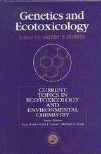Papers in the Biological Sciences

Valery Forbes Publications
Document Type
Article
Date of this Version
1-22-2015
Citation
BioScience Advance Access published January 22, 2015 doi: 10.1093/biosci/biu228
http://bioscience.oxfordjournals.org
Abstract
In their article, “Pesticide regulation amid the influence of industry,” Boone and colleagues (2014) contend that a major weakness of the US Environmental Protection Agency’s pesticide risk assessment is the use of industry-supplied data, which has inherent conflicts of interest. Therefore, studies performed by industry scientists or funded by indus!try sources are considered by the authors to be inherently biased and therefore not to be trusted, the implication being that publications by academic scientists or those funded by nonindustry sources are bias free and, therefore, by definition, suitable for use in risk assessment. However, the funding source is only one indicator of study quality, and there is no guarantee that studies funded by nonindustry sources are free of bias. The use of internationally accepted test guidelines and stringent standards of documentation and performance should go a long way toward avoiding the potential conflicts of interest with which the authors are concerned. Likewise, the use of consistent rubrics to rate the quality of potentially relevant studies for use in risk assessment seems a sensible course of action, particularly when the rubrics are based on widely recognized elements of good experimental design, such as replication, randomization of treatments, the use of proper controls, and other experimental details that increase confidence in test results. The authors seem to be missing the real problems with risk assessment, which are that most of the standard tests required for effects assessments are not measuring things that we care about and that the outputs of risk assessments are too far removed from what we want to protect (Forbes and Calow 2013).


Comments
Copyright © 2015 American Institute of Biological Sciences. Published by Oxford University Press. Used by permission.